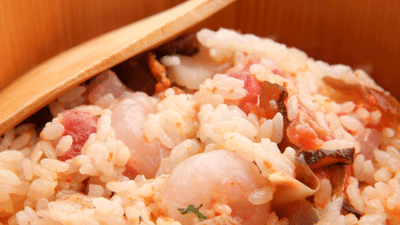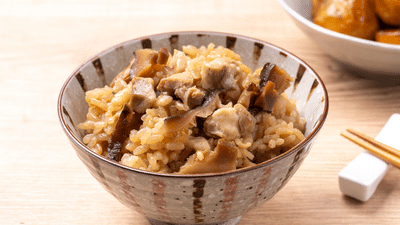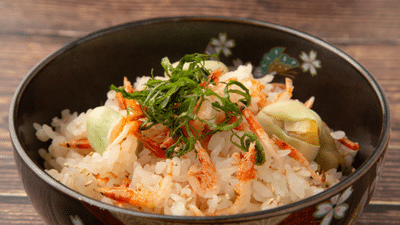Rice is often the silent backdrop of a meal, soft, simple, and content to play second fiddle. Yet every so often, even this modest grain claims the spotlight. From wedding feasts in India to sacred offerings in temples, rice has always carried more meaning than meets the eye. And somewhere in the world, one particular variety has taken things further, stepping out of the ordinary and into luxury. Curious to know which rice wears the crown as the world’s most expensive? Scroll down to know...
The grain that broke records - Kinmemai Premium rice
Back in 2016, Kinmemai Premium landed in the Guinness World Records with a price tag that made jaws drop: about $109 (₹9,000) a kilo. That’s not rice in a burlap sack for everyday meals - that’s rice in the league of champagne and caviar, where the price itself becomes part of the story. Beyond its shine, the grain boasts higher fibre, vitamins, and antioxidants than ordinary white rice, promising indulgence that still carries substance. In luxury terms, it’s nourishment dressed in silk.
How is it different from your everyday bowl

Most white rice is polished to the point of losing its soul. The outer layers, full of nutrients and flavour, are stripped away, leaving little more than starch. Kinmemai flips that script. Using patented Japanese milling technology, it keeps the germ and sub-aleurone layer intact - the parts that hold vitamins, fibre, and a natural nuttiness.
Cook it and you get grains that stand tall and fluffy, each one carrying a gentle sweetness. It isn’t sticky, it isn’t bland, it isn’t trying to disappear under curry. It insists on being noticed, holding its shape with quiet pride, releasing a fragrance that lingers, and turning the simplest meal into something memorable.
Importance of this rice

In many countties, rice is not just food. It’s ritual, history, family table and festival altar. Perfecting rice isn’t a culinary trend - it’s cultural reverence. Varieties like Koshihikari are already beloved for their taste and texture; Kinmemai builds on that legacy but adds a modern promise: luxury without nutritional compromise, marrying tradition, innovation, and wellness in every grain.
What’s in the bag is actually a blend - carefully chosen grains from across the country, married together like a master perfumer’s mix. The result is rice that feels crafted rather than harvested.
Is it worth the price?

Ask a farmer in Punjab or a grandmother and they’ll tell you that India has its own treasures: the perfumed basmati aged for years until its aroma deepens, the rare Mushk Budji of north, or the purple-black Chak Hao that gleams in kitchens. They’re prized, yes, but even the finest of these don’t come close to Kinmemai’s global record price.
So why do people pay it? For the same reason someone buys a $600 melon or a bottle of vintage wine. It’s about more than eating - it’s about the story, the rarity, the pride of saying, “this is the best in the world.”
More than just food
Kinmemai Premium shows how even the simplest staple can be turned into an object of desire. Strip away the price tag, and the lesson is universal: food is never just fuel. It carries memory, culture, and craftsmanship. A grain of rice, elevated with care, can become something close to art. For most of us, a bowl of basmati, sona masoori, or kolam will do just fine; steaming, fragrant, ready to soak up dal or curry. But knowing that somewhere, a grain sells for the price of silver makes even that humble bowl feel a little more precious, a reminder that everyday food holds extraordinary stories, waiting quietly on our plates until we choose to notice.
The grain that broke records - Kinmemai Premium rice
Back in 2016, Kinmemai Premium landed in the Guinness World Records with a price tag that made jaws drop: about $109 (₹9,000) a kilo. That’s not rice in a burlap sack for everyday meals - that’s rice in the league of champagne and caviar, where the price itself becomes part of the story. Beyond its shine, the grain boasts higher fibre, vitamins, and antioxidants than ordinary white rice, promising indulgence that still carries substance. In luxury terms, it’s nourishment dressed in silk.
How is it different from your everyday bowl
Most white rice is polished to the point of losing its soul. The outer layers, full of nutrients and flavour, are stripped away, leaving little more than starch. Kinmemai flips that script. Using patented Japanese milling technology, it keeps the germ and sub-aleurone layer intact - the parts that hold vitamins, fibre, and a natural nuttiness.
Cook it and you get grains that stand tall and fluffy, each one carrying a gentle sweetness. It isn’t sticky, it isn’t bland, it isn’t trying to disappear under curry. It insists on being noticed, holding its shape with quiet pride, releasing a fragrance that lingers, and turning the simplest meal into something memorable.
Importance of this rice
In many countties, rice is not just food. It’s ritual, history, family table and festival altar. Perfecting rice isn’t a culinary trend - it’s cultural reverence. Varieties like Koshihikari are already beloved for their taste and texture; Kinmemai builds on that legacy but adds a modern promise: luxury without nutritional compromise, marrying tradition, innovation, and wellness in every grain.
What’s in the bag is actually a blend - carefully chosen grains from across the country, married together like a master perfumer’s mix. The result is rice that feels crafted rather than harvested.
Is it worth the price?
Ask a farmer in Punjab or a grandmother and they’ll tell you that India has its own treasures: the perfumed basmati aged for years until its aroma deepens, the rare Mushk Budji of north, or the purple-black Chak Hao that gleams in kitchens. They’re prized, yes, but even the finest of these don’t come close to Kinmemai’s global record price.
So why do people pay it? For the same reason someone buys a $600 melon or a bottle of vintage wine. It’s about more than eating - it’s about the story, the rarity, the pride of saying, “this is the best in the world.”
More than just food
Kinmemai Premium shows how even the simplest staple can be turned into an object of desire. Strip away the price tag, and the lesson is universal: food is never just fuel. It carries memory, culture, and craftsmanship. A grain of rice, elevated with care, can become something close to art. For most of us, a bowl of basmati, sona masoori, or kolam will do just fine; steaming, fragrant, ready to soak up dal or curry. But knowing that somewhere, a grain sells for the price of silver makes even that humble bowl feel a little more precious, a reminder that everyday food holds extraordinary stories, waiting quietly on our plates until we choose to notice.
You may also like

When is the right time to give your baby yogurt? A pediatrician explains how much yogurt you should give your baby per day..

Police station with cells selling for £95,000 - it could become a 6-bedroom home

Top 10 food terms used by Gen Z revealed - and you might need a dictionary

Warning to anyone hoping to retire before 66

I found the cheapest Halloween pumpkins at Tesco, Asda, Morrisons Aldi and Lidl







